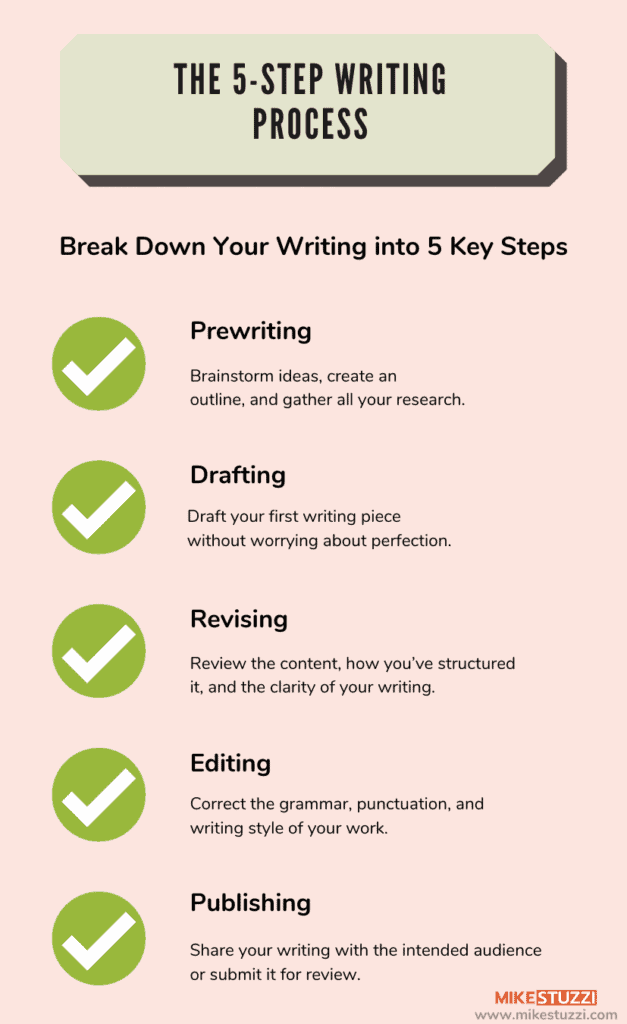How to Write a Blog Post Fast(er) in 2024
The fast-paced world of blogging we’re in now is nothing like it used to be during the early days of the Internet. You can no longer write a 150-word blog post and hope to reach your audience.
In the present day, over 6 million blog posts are published daily, and generative AI has fueled the publication frequency even more. That’s why writing and publishing content quickly is crucial to staying relevant and keeping up with the competition.
It doesn’t matter whether you’re an established blogger or just starting out. Learning how to write a blog post not only allows you to produce more content but also enables you to engage with your readers on time.
In this guide, you’ll discover effective strategies and techniques to help you write blog posts faster and enhance your content writing productivity. Read on for more details!
Disclaimer: Because the site is reader-supported, we may earn a commission if you use our affiliate links. More info here.
6 Steps to Write a Blog Post Quickly
If you want to craft quick blog posts without sacrificing quality, follow these steps.
Step 1. Start with a List of Blog Post Ideas
One of the most effective ways to write blog posts faster is to start with a list of blog post ideas. Having a collection of potential topics at your disposal can significantly reduce the time you spend brainstorming and searching for inspiration.
Here’s how to get started:
- Identify your target audience: Before generating blog post ideas, it’s wise to have your target audience in mind. Consider your readers’ interests, pain points, and the type of content they find valuable when looking for ideas.
- Explore industry trends and news: Staying updated with the latest trends, news, and developments in your niche can serve as inspiration for blog post ideas. Analyze how these trends impact your target audience and visualize content that can address their needs or provide insights.
- Tap into your own experiences: Your personal experiences can be a goldmine for blog post ideas. Reflect on challenges you’ve faced, lessons you’ve learned, or successes you’ve achieved within your niche.
- Engage with your audience: If you interact with your audience through comments, social media, or email, you can get valuable insights into their interests and concerns. Take note of the questions they ask or the topics they engage with the most and apply the feedback to find new blog post ideas.
- Expand on existing content: Most of the time, you’ll find that you have content or assets to expand upon or repurpose into new blog posts. This approach not only saves time but also allows you to delve deeper into a topic you’ve already covered and become an authority.
Now, you don’t even have to struggle with topic ideas on your own when various content idea-generation tools exist. Simply input relevant keywords or broad topics on a tool like Jasper and it will generate a list of potential ideas based on its AI algorithms.

Jasper
Jasper AI is a tool that can do a lot for you when it comes to writing. Besides content idea generation, it can help you create articles from scratch. You can use Jasper to write paragraphs for your blog post when you feel stuck.
Step 2. Research the Topic
Researching a topic is a fundamental step in writing a blog post. It not only helps you gather valuable information but also ensures that your content is accurate, credible, and informative.
Here are some key things to follow for effectively researching a topic for your blog post:
- Utilize reputable sources: You need to look for credible and authoritative sources to gather information, such as well-established websites, academic journals, industry publications, and expert opinions. Make sure to cross-reference information from multiple sources to enhance accuracy.
- Conduct keyword research: A variety of keyword research tools can help you identify popular and relevant keywords related to your topic. This will not only help optimize your blog post for search engines but also let you know what people are searching for.
- Interview experts or industry professionals: If you want to add credibility to your blog posts, reach out to professionals in your niche who have knowledge and experience in your topic. You can either conduct interviews or just email them your list of questions with the incentive of crediting them in the published post.
- Take notes and organize information: As you gather information, take detailed notes to keep track of key points, statistics, quotes, and sources. Organize your notes in a way that makes it easy to refer back to them while writing the actual content.
Step 3. Create an Outline
Creating an outline is a useful step in the blog writing process that can help you write faster. It helps you organize your thoughts, structure your content, and ensure a logical flow.
Here’s how to create an effective outline for your blog post:
- Start with the main points: Identify the key ideas or arguments you want to convey in your blog post. These should be the main points that support the whole topic, listed in a logical order that makes sense to your readers.
- Subdivide the main points: Break down each main point into subpoints or subtopics. These subpoints should provide more detailed information or evidence to support the main point.
- Arrange the points and subpoints: Rearrange the main points and subpoints in a logical order that creates a smooth flow of ideas. Be sure to use headings, subheadings, or bullet points to clearly distinguish each point and subpoint.
- Consider the introduction and conclusion: Write a brief introduction that grabs the reader’s attention and provides an overview of what the blog post will cover. Similarly, plan a conclusion that summarizes the main points and leaves the reader with a clear takeaway or call to action.
- Fill in supporting details: Under each subpoint, jot down supporting details, examples, statistics, or quotes that you want to include in your blog post. These details will add depth and credibility to your content.
Numerous outline builders exist and can help you shorten the time you need to craft your content briefs. An example is Surfer SEO and numerous of its content planning alternatives.
Surfer SEO
Surfer SEO is a tool that can help you plan your writing. It can craft detailed and SEO-friendly content briefs and help you optimize your content for Google rankings.
Step 4. Use a Framework or Formula to Write Faster
Using a framework or formula can help you write faster by providing a structured approach to your writing process. If you need a few examples of frameworks or formulas to use, check below.
The “Pomodoro Technique”
This is a time management technique that suits writing. It involves breaking your writing session into focused intervals of work (typically 25 minutes) followed by a short break of 5 minutes.
You need to set a timer for each interval and work on your writing task without any distractions. Once the timer goes off, take a short break to rest and recharge.
You then repeat this cycle until you complete your writing task. The Pomodoro Technique works because it improves productivity by keeping you focused and motivated during shorter bursts of work.
The 5-Step Writing Process

Want to write and finish your work in 5 steps? This process is all about breaking down your writing into five key steps: prewriting, drafting, revising, editing, and publishing.
In the prewriting stage, you brainstorm ideas, create an outline, and gather all the necessary research data. Next, you’ll draft your writing piece while focusing on getting your ideas down on paper without worrying about perfection.
You then, revise your draft by reviewing the content, organization, and clarity of your writing. After revising, edit your work for grammar, punctuation, and style.
You can finally publish your writing by sharing it with your intended audience or submitting it for further review. This process helps you approach your writing systematically and ensures that you consider all necessary steps.
The “Inverted Pyramid” Structure
This structure is more common in journalism and works by prioritizing information based on importance. You start with the most crucial information at the beginning (the lead), followed by supporting details in descending order of significance.
The “Inverted Pyramid” structure is effective for conveying information quickly and allows readers to grasp the main points even if they only read the beginning of your writing.
The “Hook, Line, and Sinker” Approach
This approach is commonly used in persuasive or argumentative writing. You begin with a hook to grab the reader’s attention, followed by a line that introduces your main argument or thesis statement.
Finally, you use the sinker to provide evidence, examples, or reasoning to support your argument and convince the reader. This approach helps you structure your persuasive writing in a way that engages and convinces your audience effectively.
Step 5. Write First without Editing
When starting your writing process, it would be best to give yourself permission to write freely without worrying about perfection or editing. This approach, known as “write first, edit later,” allows you to get your ideas down on paper without the pressure of making everything perfect from the start.
Below is how to implement this approach effectively:
- Write without judgment: Embrace the idea that your first draft doesn’t have to be flawless. Allow yourself to write imperfectly and without judgment because you can always refine and polish your work later on.
- Don’t get stuck on specific words or phrases: If you can’t find the right word or phrase, don’t dwell on it. Instead, use a placeholder or make a note to come back to it later. The goal at this stage is to keep the momentum going and avoid getting stuck on small details.
- Set a specific writing goal: But what would we do without goals? To stay focused and motivated and make progress, set a specific goal for your writing session, such as a specified word count, number of paragraphs, or completion of a specific section.
Step 6. Automatically Edit Your Work

You can always manually edit your blog post but there are various downsides. You may miss some errors editing your own work or spend a lot of time trying to make it meet your standards.
But with automated writing assistants and editing tools, you can catch all tiny mistakes and save time. These tools use advanced algorithms and artificial intelligence to analyze your writing and provide suggestions for improvement.
While they can be a useful tool, it’s important to remember that they aren’t foolproof and should be used in conjunction with your own editing skills. Some popular editing tools are:
- Grammarly: Grammarly is a widely used editing tool that checks for grammar, spelling, punctuation, and style errors. It provides real-time suggestions as you write, pointing out potential mistakes and offering alternative phrasing options.
- ProWritingAid: ProWritingAid is another comprehensive writing assistant that analyzes your work for grammar, style, readability, and plagiarism. It offers sentence structure, word choice, and writing style suggestions, along with detailed reports to help you understand and learn from your mistakes.
- Hemingway Editor: The Hemingway Editor focuses on improving the readability and clarity of your writing. It highlights lengthy or complex sentences, excessive use of adverbs and passive voice, and provides a readability score.
The thing about writing assistants like Grammarly is that you can install a browser extension to use them on any web-based editor, including Google Docs. The extension will highlight all errors and even correct them as you write.
Tips for Writing Blog Posts Faster
Below are more tips for writing articles faster:
- Plan ahead: Before you start writing, spend some time planning your blog post. Outline the main points or subheadings you want to cover and gather any necessary research or resources. Having a clear plan in place will help you write more efficiently and avoid getting stuck.
- Set deadlines: Give yourself specific deadlines for each stage of the writing process, from outlining to editing. Breaking down your tasks into smaller, manageable chunks with deadlines can help you stay focused and motivated.
- Eliminate distractions: A distraction-free environment will help you stay focused and write more quickly. So, you have to find a quiet space, turn off notifications on your phone or computer, and close any unnecessary tabs or applications.
- Practice freewriting: Freewriting is a technique where you write continuously without worrying about grammar, punctuation, or structure. All you do is set a timer for a specific duration, such as 10 or 15 minutes, and write whatever comes to mind about your topic.
- Use AI writing software tools: Various AI tools like Jasper can help you find topic ideas, write the outlines, and even craft the entire article. All you need to do is guide it with the right prompts and edit your work later for accuracy (because Google can rank AI-generated content but not if it’s hastily put together without regard for the value it provides).
What Slows Down Your Blog Post Writing Process?
There can be various factors that slow down your writing process. Check out a few common ones below:
- Perfectionism: Striving for perfection can lead to overthinking and spending too much time on each sentence or paragraph. While it’s important to produce quality content, getting caught up in perfectionism can hinder progress.
- Poor planning or organization: If you start your writing session without a clear plan or outline, it likely will result in disorganized thoughts and time wastage.
- Writer’s block: Writer’s block can significantly slow down the writing process. It’s important to identify the underlying causes of writer’s block and find strategies to overcome it (through traditional methods or using AI).
- Procrastination: Delaying or avoiding writing tasks can lead to unnecessary stress and time pressure. It would help to identify the reasons behind your procrastination and develop strategies to overcome it.
Being aware of these potential roadblocks and implementing strategies to overcome them is how you can improve your writing speed. Experiment with different techniques, find what works best for you, and practice regularly to become a faster and more productive writer.
Conclusion
As you can see, writing blog posts fast is possible. If you follow the proper steps, you can have your full-length articles in as little as 30 minutes to 1 hour.
But you have to remember that it’s not just about you writing quickly to publish as much content as you want. You need to provide value and not write thousands of meaningless words.
Keeping your reader in mind is how your content will get more visibility. Implement a few SEO practices here and there and your article will rank well on Google.







